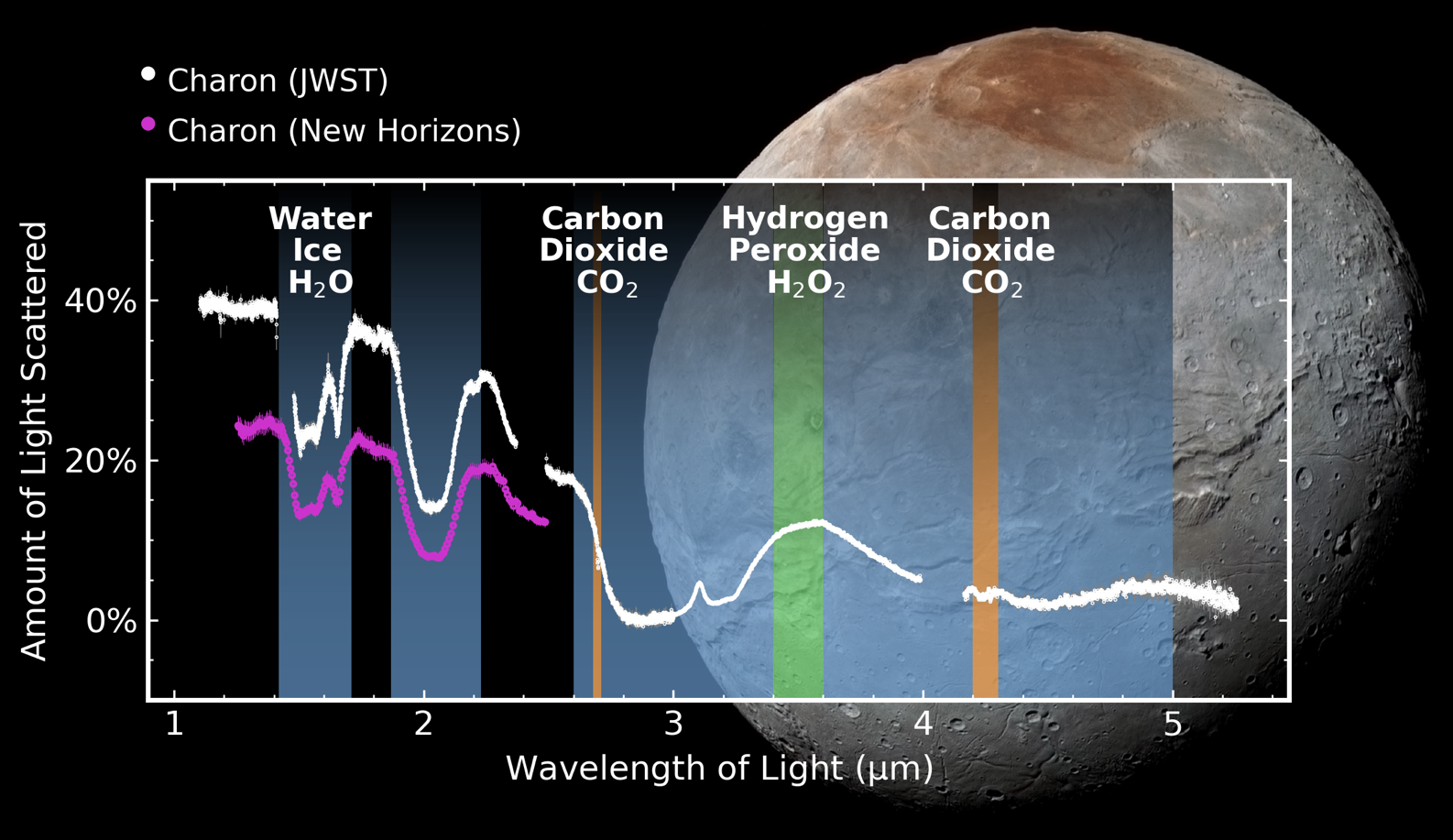Charon is the largest among the five peculiar moons of Pluto. It was studied briefly as NASA’s New Horizons flew by the system in 2015, a quick encounter that revealed a lot, including a dark patch on its Northern pole called the Mordor Macula. Planetary scientists have now conducted follow-up studies using the James Webb Space Telescope (JWST), discovering intriguing new facts about the surface chemistry of this distant moon.
When New Horizons studied Charon, its instruments detected water ice, ammonia-bearing substances, and even some organic compounds. This indicated the presence of interesting chemistry in a world that should be a frozen relic of the early Solar System. The spacecraft also spotted some bright ejecta surrounding craters on its surface, suggesting that material must have escaped from underground. Its composition remained unknown – until now.
JWST was able to conduct a deep infrared search of the surface of the distant moon and confirmed the presence of water and the other intriguing chemicals previously spotted by New Horizons. It also detected the presence of a veneer of carbon dioxide.
There are a lot of interesting chemicals on Charon.
Image credit: Silvia Protopapa (SwRI), Ian Wong (STScl)
Researchers believe that the carbon dioxide comes from below the surface, in deposits that have existed for billions of years since Charon formed. They are now on the surface because they have been excavated by asteroid impacts, and the bright ejecta around the craters is believed to be just that.
If the thought of a carbonated interior to Charon (it’s not really carbonated… it’s dry ice) is not already amazing enough, the team has added to that the discovery of hydrogen peroxide. This chemical is commonly used for hair bleaching or as a disinfectant, and its presence on Charon indicates that there is some really interesting chemistry going on.
Hydrogen peroxide is a molecule similar to water, but with another atom of oxygen – it is H2O2. The presence of hydrogen peroxide suggests that the water ice on its surface is being transformed. The are many potential culprits: sunlight is dim that far away but it still has an impact; there is also the solar wind, the stream of electrically charged particles released by the Sun, slamming onto the surface of Charon; and galactic cosmic rays too will slap into the moon.
All in all, the research points at an intriguing world affected by Pluto, of course, but also by faraway phenomena. Other bodies in the Kuiper Belt, where Pluto and Charon reside, might also be affected in a similar way.
The study is published in Nature Communications.
Source Link: Key Component Of Hair Bleach Found On Pluto’s Largest Moon
